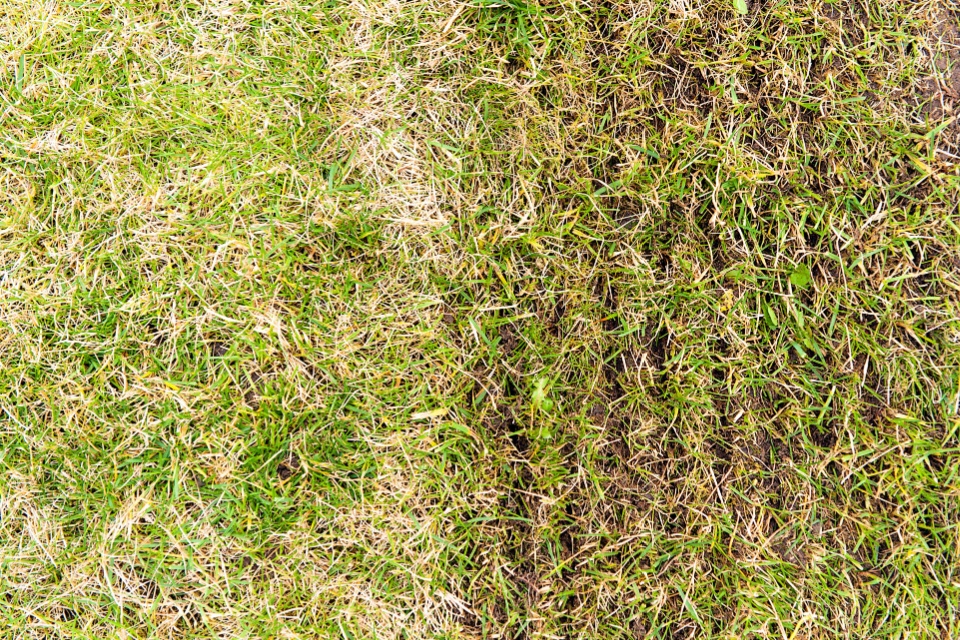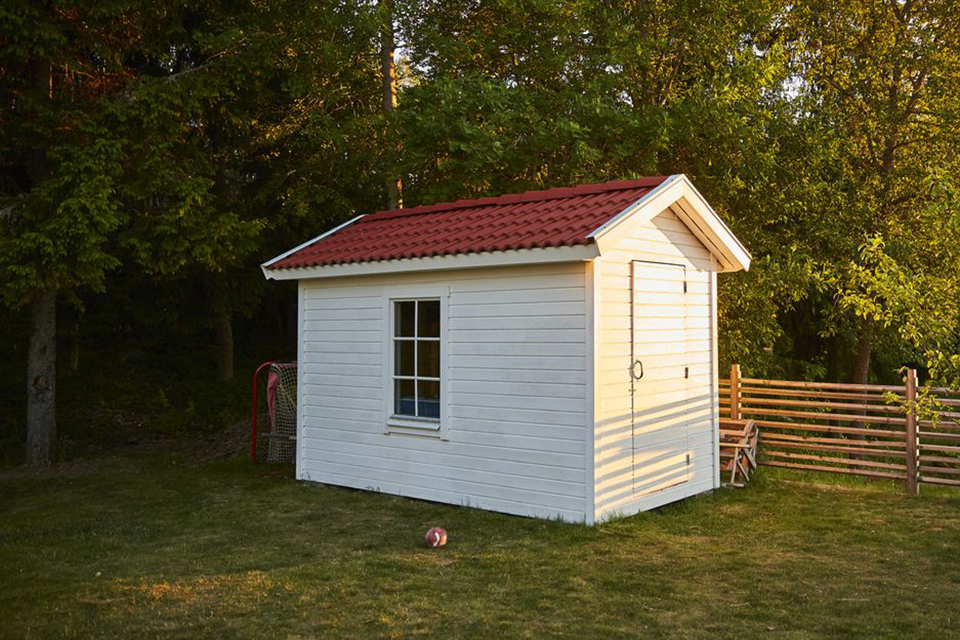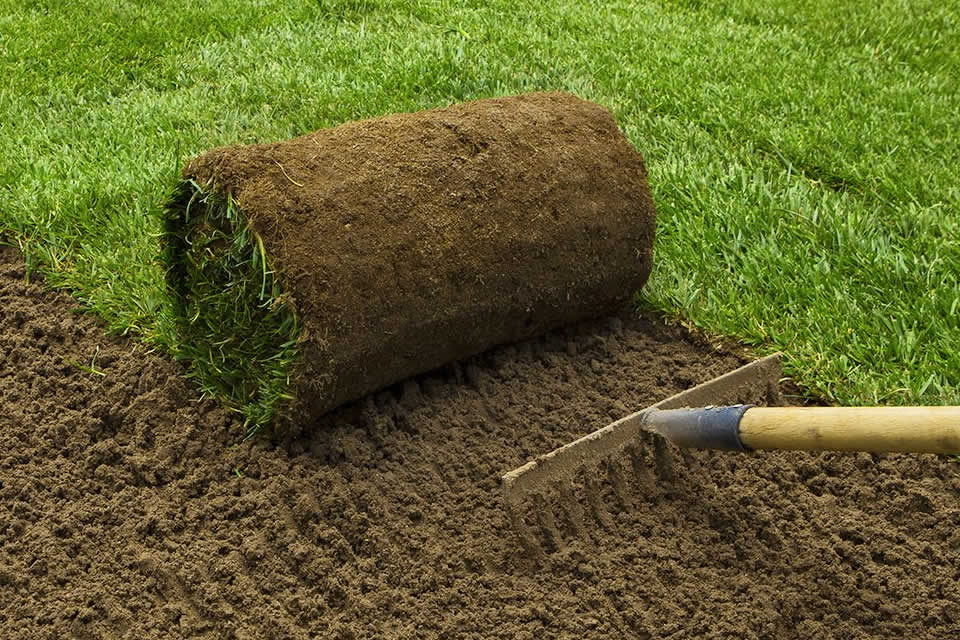Does Your Lawn Need Some Attention?
The following guide will explore various types of lawn problems. We will look at possible lawn issues that may arise, such as yellow spots and dead grass before laying out potential solutions for each problem.
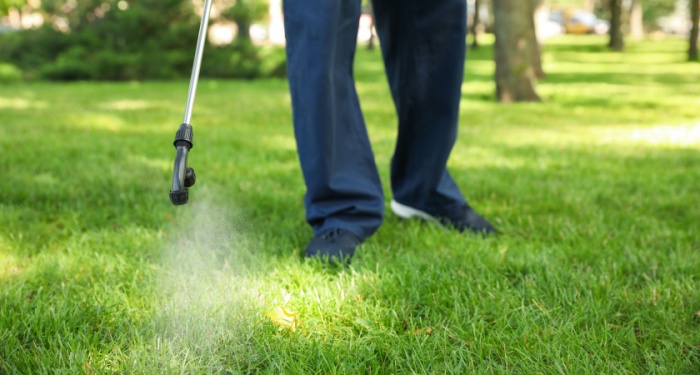
We will also discuss additional topics such as how much it will cost to have a lawn replaced. This article will be helpful if you are experiencing issues with your lawn or want to expand your knowledge on the subject so you can be prepared for future issues should they arise.
What is Wrong with My Lawn?
For each of the following subsections, we will break down the nature of different lawn problems and what signs you may notice. Lawn problems that can occur are weeds in lawn, moss in lawn, the grass failing to grow, yellow grass, brown patches on the lawn, dead spots and red thread.
Weeds in Lawn
Weeds are essentially undesired plants which may appear in a garden. Often thin or open turf increases the risk of weeds appearing in a garden.
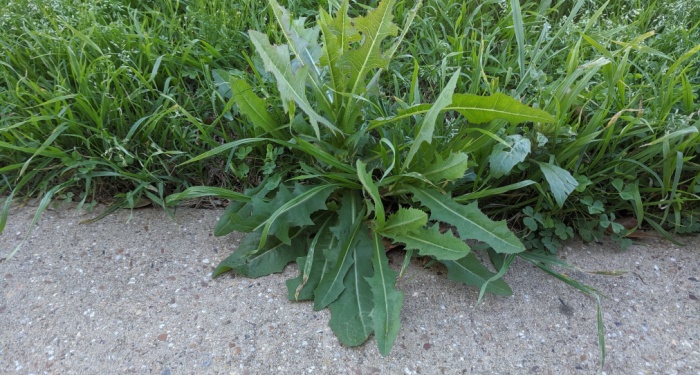
Evidence of this issue comes in the form of plants appearing such as parsley-piert, blue-flowered speedwell, common mouse-ear chickweed, yarrow daisies, lesser trefoil, dandelions and buttercups among other weed plants.
Moss in Lawn
Another common lawn issue is the accumulation of moss. Moss are flowerless plants that often form green ‘carpets’ and plant collections.
If you spot green clumps or carpet-style layers of green in your garden, this is very likely moss. Moss types which you may notice include true mosses and sphagnales.
Grass Not Growing
A lack of grass growth can be caused by reasons such as a lack of access to sufficient sunlight, compacted soil, poor air circulation, underground objects and nearby tree roots which are competing for resources such as sunlight, water and nutrients.
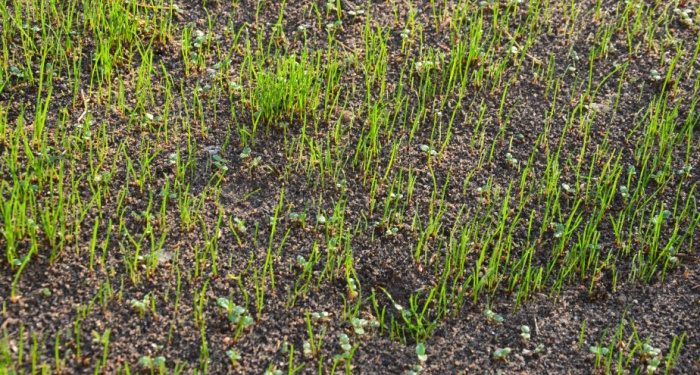
You may notice that even after heavy rain, your grass is failing to grow if there are fundamental issues restricting its growth.
Yellow Grass
Grass can turn yellow, representing a health issue in your lawn. Yellow grass can appear due to a lack of essential nutrients such as nitrogen or iron, prolonged exposure to heat, from the grass being cut too short, a lack of sunlight or from damage caused by lawnmower petrol.
You will notice that patches of yellow grass, likely randomly distributed have appeared in your garden should this issue arise.
Brown Patches on Lawn
Brown patches that appear on a lawn are the result of Rhizoctonia, a type of fungus. Rhizoctonia tends to grow in warm temperatures, ideally around 26 to 29°C and during periods of high humidity although it can grow in temperatures as low as 18°C.
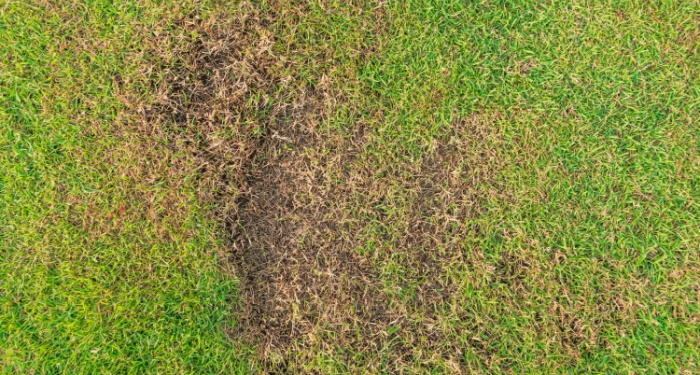
If you notice brown patches throughout your garden and during particularly warm weather, it is probably due to Rhizoctonia growth. If brown patches appear when it is also very humid out, this too points to Rhizoctonia as the culprit.
Dead Spots
Spots of dying grass that have a brown colour can turn into bare soil forming dead spots. They are often found in areas of the lawn that are otherwise healthy and green. There are various types of dead spots such as irregular dead spots which may appear after you’ve cut the grass.
These can be the result of split petrol. You may also notice brown spots during times of low precipitation and in a place where tree roots exist beneath the soil which points to a lack of water moisture or circular spots with green edges which can result from female dogs urinating.
Dead patches can also arise because of the overuse of fertiliser, moss control, weed killer or due to turf scalping, insects, lawn diseases or fungi. Any of the issues discussed in this subsection may explain the arrival of dead spots in your lawn.
Red Thread Lawn
Spots of dead grass can appear in the form of red thread. Red thread is the result of a fungus named Laetisaria fuciformis. If a red tint appears in your lawn and appears to be a natural phenomenon, then it is most likely red thread.
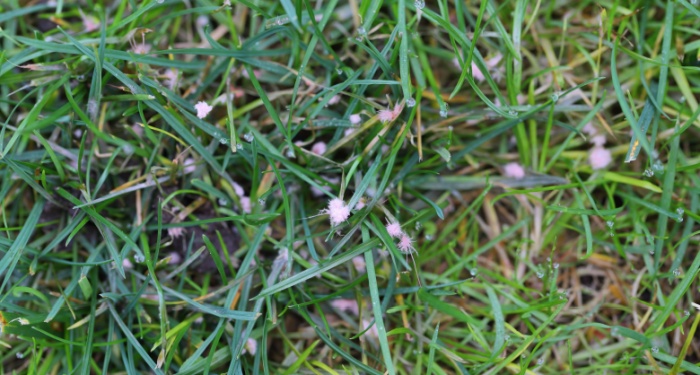
It is more likely to prove a threat if you have a red fescue lawn and red thread is also most likely to appear during the summer and autumn months and particularly so if those months include plenty of rain.
Thatch
Thatch is a mixture of matter, both live and dead. It is generally present between the root zone and the grass leaf. Thatch has a brown appearance and will feel soft and spongy. It may be found as surface or subsurface thatch.
How Can I Fix My Lawn?
We will now lay out solutions for each of the problems raised in the previous section.
Weeds in Lawn
While employing weed killer may be the first thought to come to mind when it comes to removing weeds from your garden, there are alternative options worth considering. This is especially relevant if you have a new lawn as weed killer can be especially harmful if the lawn has only been sowed or laid in the past several months.
Feeding, aerating and scarifying is a non-weed killer method you could utilise. You could also remove weeds with a hand fork or dig them out during the autumn months before re-turfing and re-seeding. Another option is to rake over the weeds before mowing. This solution will help fight creeping weeds in particular. Garden lime on acidic soils during the winter months is another possible approach.
If you choose to use weed killer, first, you’ll need to find one that will work for the specific weeds that are growing in your garden. After purchasing, apply this product in the spring and summer months. Apply the weed killer following the guidance of the instructions that come with the product.
If spot treatment is required, ready-to-use weed killer sprays can be used. If the weed killer does not prove effective after one attempt, you may need to apply the product every month to six weeks on average on two or three occasions although again ensure that you follow the product instructions correctly.
Moss in Lawn
To remove loose moss, you can perform scarification, raking out moss before emptying it into bags to be binned. Alternatively, use a mechanical scarifier for a particularly large lawn. Another option is to employ a moss killer, ideally, that which contains sulphate or iron. You should treat moss in the autumn months or springtime.
You can perform this job by hand or by using a push-along spreader. Do not add lawn sand at a high which is too high as this may also kill the grass. Moss killer should be applied in good weather. Check the specific instructions of the product you have purchased.
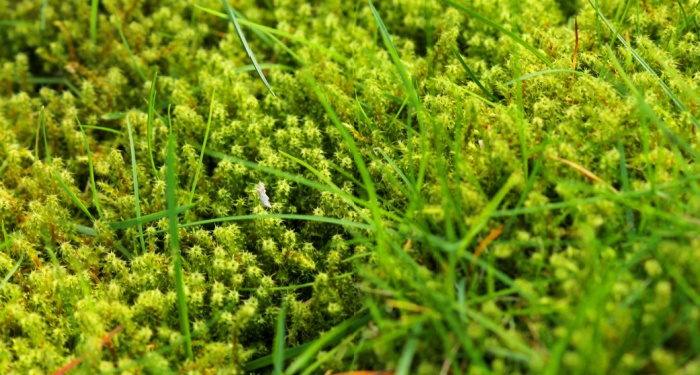
Some products may require watering the moss 2 days after it has been applied if there hasn’t been any rain. If the grass strength and health is poor, you could use a fertiliser-moss killer mixture.
Allow the moss to blacken over a 2-3 week timeframe before using a rake such as a spring-tine rake to pull it up and bin it. Ultimately, the problems that lead to the emergence of moss need to be fixed or else the moss killer will only prove a temporary solution.
Grass Not Growing
How you can help a lawn grow again will vary depending on the reason for the lack of growth. If your grass needs reseeding due to irreparable health issues with your lawn, you should first cut the grass to about 25mm of height. A spring tine rake can be used to remove thatch. A powered scarifier may be needed if the thatch is subsurface.
Spike the grass with a garden fork to a depth of about 150mm every 300mm. Feed the lawn if it has yet to be fed in the previous four months. Ideally, you should use a pre-seeding fertiliser. Apply the seeds evenly across your garden. Follow the instructions laid out by the specific lawn seed product which you’ve bought.
You may also choose to apply a mixture of seeds and lawn top dressing. Ensure that the areas which you’ve seeded remain moist. Water the garden two to three days after seeding it, if there has been no precipitation.
Cover the seeded areas with appropriate netting to protect it from birds. Make sure that foot traffic over the newly seeded lawn is kept minimal for the next one to three weeks. For the first 2 or 3 times, you cut the grass after seeding, establish a mowing height of about 50mm and then a height of roughly 25mm for the next 2 to 3 times after that.
Avoid cutting anything larger than a quarter of the grass blades soon after seeding, and regularly, the limit should be a third of the length of the grass blades.
If a lack of sunlight is the issue, you may need to find ways to remove obstructions that are creating shaded areas in your garden. If this is not possible, you can replace your current turf with a new type of turf that requires minimal sun exposure, or you may choose to have artificial grass laid down in its place.
If you choose to remove the old turf and seed a new turf species, approximately following the steps mentioned above for re-seeding can be used. In order to lay turf, you should first remove the old turf. A spade can be used to cut beneath each part of the turf. For larger spots, you could hire a turf cutter.
Turn over the soil and place it at a depth of 15cm below with a cultivator or spade. Remove any weeds, stones and additional debris. Rake the entire area smooth. Measure the lawn area in terms of square metres so that the right amount of turf can be ordered. Before laying the turf, you may choose to apply a pre-turfing fertiliser.
Unroll the first turf strip along the lawn perimeter. The new turf layers must have their underside in contact with the lawn’s soil. The next strip should be laid down along the longest area that runs in a straight line. Continue to lay each strip.
You want a pattern that is comparable to bricks being laid. If any pieces overlap or go over the edges, they should be cut off with a lawn edger or a sharp knife.
Once you’ve laid the turf, water it. Water the turf well each morning for the next 7 to 14 days unless it is raining heavily. If you see any areas of the turf that are drying out, water them heavily and right away. Don’t forget to fertilise your new lawn every 4 to 6 weeks during the warmer months.
Another common reason behind a lack of grass growth is compacted soil. In order to loosen compacted soil, you should utilise an aerator. A plug aerator, the most popular type, can be used in order to have its hollow tines rows to remove soil from your lawn. Once the soil comes to the surface, it will break apart and can be binned afterwards.
Other aerator types you may choose to use are slicing and spike aerators. Aeration can also be used to improve air circulation in your lawn’s soil, another possible reason for grass growth to be stunted, if not halted entirely.
Yellow Grass
To fix a faded lawn, you will first need to identify the cause of the problem. If a lack of sunlight is the issue, you can thin out trees in your garden, which may be blocking the sun. To achieve this, first, remove any diseased or dead branches entirely. Then, begin cutting off branches which have a two inch thickness or less.
Cut these branches at a slight angle just beyond the parent wood. Do not cut into the trunk or main leader of the tree. Ideally, you should prune a tree when it is dormant. Any growth surrounding the canopy edges should be removed as well as any stems that are broken or dead from the interior. Do not overdo it as you may weaken the tree’s structure. However, you may need to increase shade in your garden if too much heat exposure is the issue.
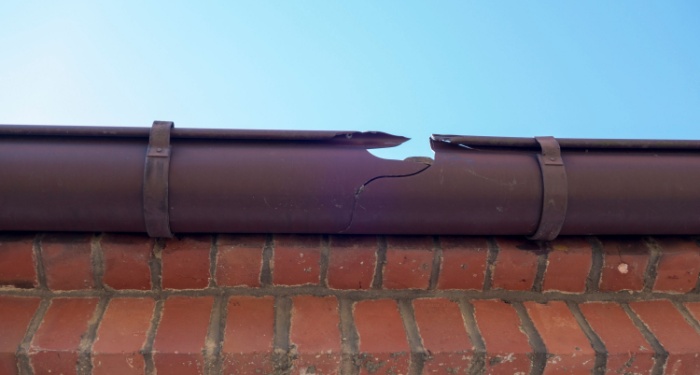
If your grass has simply been cut too short, mow only when the grass is dry and do not cut the grass to the same depth as you usually would. Fertilising your grass can feed the lawn essential nutrients which it may be lacking. For optimal results, you should cut the grass 3-4 days before fertilising your lawn.
Read the instructions of the fertiliser product and follow them precisely. If the product instructs that you apply a given amount of fertiliser for each metre squared, you can start by measuring a given square metre area, filling up a container with the amount required for that area and then apply.
Brown Patches on Lawn
To remove brown patches or Rhizoctonia from your lawn, you should start by watering your lawn every 3-4 days. Water it deeply, about half an inch each time. Cut the grass half an inch higher than usual during the summer. Aerate your lawn and remove thatch. Aerating once every six months on average can also help to improve good drainage and air circulation, both of which will improve the vigour of your lawn.
Find the right fertiliser to use when your lawn has Rhizoctonia. Fertilisers with too much nitrogen can help strengthen and grow brown patch fungi, for example. Apply an appropriate fungicide as soon as you see signs of brown patches in your lawn and follow the instructions to a T. Once the brown patches have been removed, ensure that you take good care of your lawn in the months and years ahead such as through regular watering, applying fertiliser and mowing correctly. This way, you will significantly reduce the chances of brown patches returning.
Dead Spots
To repair dead patches in your lawn, first, remove any dead turf and additional debris. Loosen the soil by preferably digging and loosening the 2 to 3 inches of soil closest to the surface. Compost or organic matter should be applied if the soil appears to be of poor quality.

Apply grass seed over the newly loosened soil. The seed should be scratched in gently to ensure that it is applied into the top ¼ of an inch of the soil. Then, stamp over it very lightly and cautiously. Apply an appropriate fertiliser for new grass. Finally, mulch the soil and then water it.
Red Thread Lawn
To treat red thread with a non-chemical solution, nitrogen can be applied to the areas where red thread is present. Ideally, nitrogen should be applied in the form of sulphate of ammonia with a quantity of 15g per square metre.
This approach should not be undertaken from September onwards due to the risk of snow mould. You can also choose to scarifier the turf with an electric scarifier or rake to remove thatch and moss as well as to improve aeration.
An aerator can be used to improve the air circulation of the soil and loosen it also. The only chemical control available for red thread is available in the form of trifloxystrobin. After purchasing a product, apply in accordance with the instructions. It can be applied at any time of the year except if there are drought conditions or if the lawn has frozen over. It should also only be applied two times a year at most.
You should also make sure that the manufacturer of any given product is acting within the law as there are strict rules regarding the application of professional fungicides in domestic gardens. If you choose to apply a fungicide, it should be done alongside one or more of the non-chemical approaches mentioned above.
Thatch
A dethatcher (scarifier), which is a powered rake, can be used to remove thatch. The spring steel combs inside the dethatcher will lift thatch up so that it can be collected and binned, such as in a compost bin.
How Much Will It Cost to Fix My Lawn?
For this section, we will discuss the labour costs involved in having various issues solved. We will also look at the hourly and daily charges of gardeners. To have simple garden maintenance performed which can include having moss or weeds removed will cost about £120 for a garden with an area of 6x4 metres.

For a garden with an area of 8x6 metres, you can expect the price to come to around £170 and approximately £270 for a 12x8 metre-sized garden. In each case, there will likely be an additional two charges totalling £30 for materials and waste removal. A gardener will charge about £15 to £50 per hour or approximately £150 per day.
How Much is a Replacement Lawn?
In some cases, the only option will be to replace the lawn entirely. This may be the case, for example, if you cannot find a solution to the lack of sunlight that your lawn is in need of and thus need to install a new, appropriate turf species.
To have new turf laid, the labour costs will end up at around £125 for a garden under 10m2, £300 for a garden of about 10-25m2, £500 if the garden is somewhere in the range of 25-75m2 or £600 if your garden has an area of 75-100m2.
FAQs
Q: What is lawn sand?
A: Lawn sand is a combination of fine sand, sulphate of ammonia and iron sulphate. It is used to improve the vigour of your lawn and reduce the chance of weed growth.
Q: When should I scarify my lawn?
A: Ideally, you should scarify your lawn in early autumn or late spring.
Q: Why do I have so much moss in my lawn?
A: Weak grass and moisture are the main causes of moss accumulation in a lawn.
Q: How long do you leave a new lawn before cutting it?
A: Broadly-speaking, you should wait for about three weeks.
Q: What is causing dead patches to appear on my lawn?
A: Dead spots or dead patches can appear for many different reasons. Low precipitation, resource competition from trees, split petrol, fertiliser, moss control, weed killer, turf scalping, insects, lawn diseases, and fungi are all possible explanations.
Sources
- https://www.lovethegarden.com/uk-en/article/common-lawn-problems-and-how-fix-them
- https://www.mountainmoss.com/pages/what-is-moss
- https://extension.psu.edu/introduction-to-weeds-what-are-weeds-and-why-do-we-care
- https://www.rolawn.co.uk/thatch
- https://www.rhs.org.uk/advice/profile?pid=369
- https://www.onlineturf.co.uk/knowledge-base/tutorials/turf-laying-guide
- https://www.gardeningknowhow.com/ornamental/trees/tgen/thinning-canopies-in-trees.htm
- https://www.geckogreen.com/about/our-blog/how-do-i-get-rid-brown-patches-my-lawn
- https://www.greenviewfertilizer.com/articles/how-to-fix-dead-patches-in-lawn/

